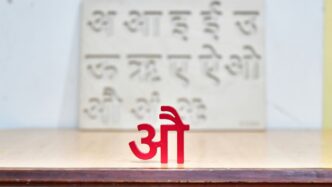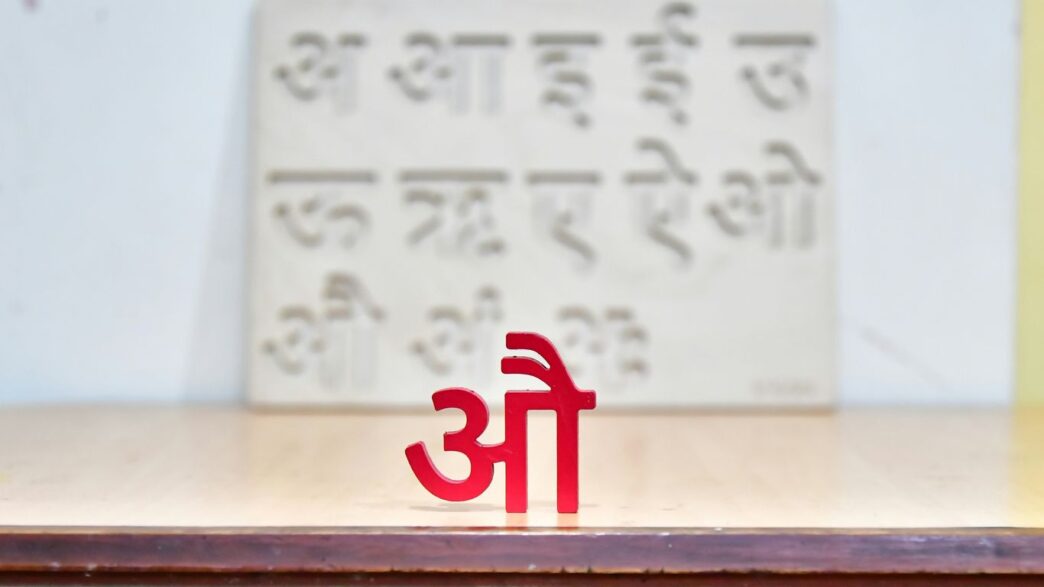Trying to figure out what ‘wired’ really means when we talk about Hindi? It’s not as simple as just looking up a word in a dictionary. This word, like many others, has layers of meaning that change depending on how and where it’s used. We’re going to explore the different ways ‘wired’ can be understood in Hindi, from its literal translations to its more figurative and modern uses. It’s a journey into how language adapts and how context shapes meaning, especially when bridging different cultures and technologies.
Key Takeaways
- The term ‘wired’ in Hindi isn’t a single, direct translation but encompasses various concepts related to connection, intensity, and technology.
- Literal translations of ‘wired’ exist, but they often miss the deeper, more nuanced meanings found in Hindi contexts.
- Figurative uses of ‘wired’ in Hindi literature can describe emotional states, intense feelings, and metaphorical connections.
- Modern interpretations of ‘wired’ in Hindi focus on digital networks, technological links, and the interconnectedness of systems.
- Understanding the ‘wired meaning in hindi’ requires considering context, cultural nuances, and the specific application, whether literal, figurative, or technical.
Understanding ‘Wired’ in Hindi Contexts

When we talk about ‘wired’ in English, it can mean a few different things, right? It could be about actual wires, like an internet connection, or it could mean someone is really excited or tense. But how does that translate into Hindi? It’s not always a straight shot. The way we express these ideas in Hindi often depends heavily on the specific situation.
Exploring Literal Translations of ‘Wired’
If you’re talking about something physically connected by wires, like a computer or a phone, Hindi has pretty direct words. For example, ‘तारों से जुड़ा’ (taaron se juda) literally means ‘connected by wires’. You might also hear ‘वायर्ड’ (wired) used directly as a loanword, especially in tech circles. It’s like saying ‘internet is wired here’ – ‘इंटरनेट यहाँ वायर्ड है’ (internet yahaan wired hai). It’s pretty straightforward when you’re talking about electronics.
Nuances of ‘Wired’ Beyond Direct Equivalents
But what about when ‘wired’ means something else? Like feeling really energized or anxious? Hindi doesn’t have one single word that captures all those English meanings. You have to look at the context. For instance, if someone is super energetic, you might say they are ‘बहुत उत्साहित’ (bahut utsaahit – very excited) or ‘ऊर्जावान’ (oorjawaan – energetic). If they’re tense or nervous, words like ‘घबराया हुआ’ (ghabraaya hua – nervous) or ‘तनाव में’ (tanaav mein – stressed) come into play. It’s more about describing the feeling than finding a direct word-for-word match.
Common Hindi Words for ‘Wired’ Concepts
Let’s break down some common ways to express ‘wired’ ideas in Hindi:
- Excited/Energetic:
- उत्साहित (Utsaahit): Excited
- जोशीला (Josheela): Spirited, full of zeal
- फुर्तीला (Phurteela): Agile, quick
- Tense/Anxious:
- तनावग्रस्त (Tanaavgrast): Stressed, tense
- चिंतित (Chintit): Worried, anxious
- बेचैन (Bechain): Restless, uneasy
- Physically Connected:
- तारों वाला (Taaron waala): Having wires
- जुड़ा हुआ (Juda hua): Connected
So, you see, it’s not just about finding one Hindi word for ‘wired’. It’s about understanding the feeling or the situation and picking the right Hindi expression to match it. It’s a bit like putting together a puzzle, really.
Figurative Meanings of ‘Wired’ in Hindi Literature
When we talk about ‘wired’ in Hindi literature, it’s rarely about actual wires or cables. Instead, it’s more about a state of being, a feeling that’s hard to pin down with a simple word. Think of it as being intensely alert, maybe even on edge, or deeply connected to something. It’s that feeling you get when something significant is about to happen, or when you’re experiencing a really strong emotion.
Emotional States and ‘Wired’ Feelings
In Hindi stories, ‘wired’ often describes a character’s internal turmoil. It’s not just being nervous; it’s a deeper, more pervasive sense of unease or heightened awareness. Imagine a character who’s just witnessed something shocking. They might not be screaming or crying, but inside, they’re ‘wired’ – every nerve is buzzing, every sound is amplified. This state can be a precursor to action, or it can be a sign of deep psychological impact.
- Heightened Senses: Characters might feel like their senses are on overdrive.
- Internal Tension: A feeling of being coiled tight, ready to spring or break.
- Precognitive Unease: A sense that something is wrong or about to happen.
Metaphorical Usage in Hindi Narratives
Authors use ‘wired’ concepts metaphorically to paint vivid pictures. A character might feel ‘wired’ to their past, meaning they can’t escape its influence. Or a community might be ‘wired’ together by shared trauma, creating a collective sense of dread or resilience. It’s about the invisible threads that connect people and events, often in ways that are complex and emotionally charged.
Translating Intense Emotions: The Case of ‘Tamas’
Consider Bhisham Sahni’s novel ‘Tamas,’ which deals with the brutal riots following India’s partition. The characters in ‘Tamas’ are often in a state of extreme emotional distress. Translating this ‘wired’ feeling – the fear, the confusion, the raw survival instinct – is a huge challenge. It’s not just about finding a Hindi word that means ‘scared.’ It’s about capturing that visceral, almost physical manifestation of intense emotion. For instance, a character might feel their ‘limbs give way’ or their ‘mouth drying up’ – these are physical symptoms of being emotionally ‘wired’ to a terrifying situation. The goal is to convey that overwhelming sense of being caught in a moment, unable to escape the intensity of the experience. It’s about translating the feeling of being wired, not just the word itself.
Technical and Modern Interpretations of ‘Wired’
When we talk about ‘wired’ today, it’s often about how things connect, especially in the digital world. It’s not just about physical cables anymore, though that’s still a big part of it. Think about your home internet – it’s likely ‘wired’ through Ethernet cables for a stable connection, or maybe it’s a mix of wired and wireless. This is the most direct meaning, referring to devices linked by physical wires, like a computer connected to a router.
The Concept of Networked Connections
Beyond just plugging things in, ‘wired’ also describes the whole idea of being connected in a network. This applies to everything from local networks in offices to the vast global network of the internet. It’s about how information flows between different points.
Here’s a quick look at how we use ‘wired’ in a technical sense:
- Physical Connection: Devices linked by cables (Ethernet, USB, etc.). This is the classic definition.
- Networked Systems: Computers and devices forming a network, whether local or global.
- Data Transfer: The infrastructure that allows data to move between connected points.
Digital and Technological Contexts
In modern Hindi, ‘wired’ can also refer to the broader digital landscape. When someone says a place is ‘wired’, they often mean it has good internet access and is set up for modern technology. It’s about being equipped for the digital age. This is where the meaning starts to stretch beyond just cables and into the realm of connectivity in general. We see this in discussions about smart cities or even just a well-equipped office space. It’s about being ready for the digital age, which is why understanding the internet’s role is so important.
Comparing Machine and Human Translations
Translating ‘wired’ in these technical contexts can be tricky. Machine translation tools are getting better, but they sometimes miss the subtle differences. For instance, a direct translation might focus only on the physical cable aspect, missing the broader sense of being networked or technologically equipped. Human translators, on the other hand, can pick up on the context and choose a Hindi word that better fits the intended meaning, whether it’s about a physical connection or the general state of being connected in a digital environment.
Challenges in Translating ‘Wired’ Meaning in Hindi

Trying to get the exact feel of ‘wired’ into Hindi isn’t always straightforward. It’s not just about finding a word that means ‘connected’ or ‘plugged in.’ The real tricky part comes when ‘wired’ is used in a more abstract or emotional sense. Think about how we use it in English – someone can be ‘wired’ on caffeine, or ‘wired’ with nervous energy before a big event. These aren’t things you can just swap out with a single Hindi word and expect it to land the same way.
Semantic Similarity in Translation
Sometimes, even when a translation looks good on paper, the meaning just doesn’t quite match up. This is especially true with words that have a lot of baggage, like ‘wired’ can. We’re talking about how close the meaning is between the English word and its Hindi counterpart. It’s like trying to fit a square peg in a round hole if the meanings aren’t close enough. For instance, a phrase like ‘feeling wired’ might get translated literally, but it might miss the underlying sense of being overstimulated or on edge. The nuances get lost, and the translated text feels a bit flat.
Handling Abstract and Philosophical Content
This is where things get really interesting, and honestly, a bit tough. When you’re dealing with texts that are philosophical or deeply emotional, like some classic Hindi literature, the word ‘wired’ can take on meanings that are hard to pin down. It might refer to a state of intense mental focus, a deep connection to something spiritual, or even a feeling of being overwhelmed by complex ideas. These aren’t simple concepts. Translating them requires more than just word-for-word substitution; it needs an understanding of the cultural and philosophical underpinnings of the original text. It’s like trying to explain a complex feeling to someone who doesn’t share your background – you need to build bridges with your words.
The Role of Context in Word Choice
Context is king, as they say. The meaning of ‘wired’ can change dramatically depending on how it’s used. Is it about technology? Is it about a person’s emotional state? Is it a metaphor? Without the right context, choosing the best Hindi word becomes a guessing game. For example, if a text talks about a ‘wired network,’ the translation will be very different from a text describing someone as ‘wired’ after a long night. Even within a single text, the surrounding sentences can shift the meaning. This means translators, whether human or machine, need to be really good at picking up on these subtle cues to make the right choice. It’s a constant balancing act between the literal meaning and the intended message.
Analyzing ‘Wired’ Through Translation Models
So, how do these fancy computer programs actually handle translating something as tricky as ‘wired’ into Hindi? It’s not just about swapping words, you know. We’re looking at how different translation models, from the old school to the super-new AI stuff, tackle this. It’s pretty interesting to see where they succeed and where they stumble.
Trigram Analysis of Hindi Translations
When we break down text into groups of three words, called trigrams, we can get a sense of how natural a translation sounds. For ‘wired’ and its related concepts, looking at Hindi trigrams helps us see if the translated phrases flow well or if they sound a bit clunky. It’s like checking if the sentence structure feels right in Hindi, not just if the individual words are correct. For example, a common trigram might be ‘connected to the internet’ in English, and we’d see if the Hindi equivalent appears in a similar three-word sequence.
Model Performance on Descriptive Elements
Different translation models have varying strengths. Some are really good at picking up on descriptive words, like when ‘wired’ means ‘energetic’ or ‘tense’. Others might struggle with these more nuanced meanings. We can compare how well models like Google Translate or more advanced AI systems handle these descriptive bits. It’s not always about a perfect word-for-word match; it’s about capturing the feeling or the state being described.
Here’s a quick look at how different models might perform:
| Model Type | Handling ‘Energetic’ Meaning | Handling ‘Connected’ Meaning | Handling ‘Tense’ Meaning |
|---|---|---|---|
| Basic Statistical MT | Fair | Good | Poor |
| Neural MT (e.g., Google Translate) | Good | Very Good | Fair |
| Advanced AI Models | Very Good | Excellent | Good |
Google Translate vs. Advanced AI Models
Google Translate has gotten a lot better over the years, but it still has its limits, especially with idioms or culturally specific phrases. Advanced AI models, often trained on massive datasets and using complex architectures like BERT, tend to do a better job of understanding context. This means they can often grasp the intended meaning of ‘wired’ even when it’s used figuratively. The real test is seeing if these models can translate the feeling behind the word, not just its dictionary definition. It’s a constant race to see which models can better bridge the gap between languages and cultures.
Cultural and Linguistic Dimensions of ‘Wired’
When we talk about ‘wired’ in Hindi, it’s not just about plugging something in. It’s about how language itself carries culture, and how that can get tricky when translating. Think about writers who grew up in one culture but are writing for another. They’re kind of in a middle ground, trying to explain things that are totally normal to them but might seem a bit strange or need extra explanation for readers from a different background. It’s like trying to describe the taste of a specific spice to someone who’s never even seen it. This act of translation goes way beyond just swapping words; it’s about bridging entire worlds of experience.
Hindi Script and Translation Processing
The way Hindi is written, using the Devanagari script, adds another layer to how translation tools work. Unlike languages that use the Latin alphabet, Devanagari has its own set of characters and rules. This means that translation software needs to be specifically trained to handle these differences. It’s not just about recognizing letters, but understanding how they combine to form words and convey meaning within the Hindi linguistic structure. Sometimes, the visual form of the script itself can influence how a word is perceived or how easily it can be processed by algorithms.
Bridging Language Gaps with Translation
Translation is the bridge that connects people across different languages and cultures. When we’re trying to understand a concept like ‘wired’ in Hindi, we’re not just looking for a dictionary definition. We’re looking for the feeling, the context, the cultural baggage that comes with it. This is especially true for creative works. A writer might use a Hindi word that has a certain emotional weight or historical association that doesn’t have a perfect one-to-one match in English. The translator’s job is to find a way to convey that same feeling, that same nuance, to the reader, even if it means using a different phrase or a more descriptive approach.
The Significance of Hindi and Telugu Texts
Looking at texts in languages like Hindi and Telugu, for example, shows us how diverse the expression of concepts can be. These languages have their own unique ways of describing states of being, connections, or even technological states. For instance, a concept that might be translated as ‘wired’ in English could have multiple expressions in Hindi or Telugu, each carrying slightly different connotations. This highlights the importance of not just translating words, but understanding the cultural and linguistic frameworks they come from. It’s a reminder that language is deeply tied to how we see and interact with the world around us.
Wrapping It Up
So, what have we learned from all this? It’s pretty clear that just translating a word like ‘wired’ literally into Hindi doesn’t always cut it. The way we use words, especially in different languages, is super tied to context and culture. What sounds normal in English might come across totally different, or even confusing, in Hindi. We saw how different translation tools handle things, and honestly, they’re getting better, but they still miss some of the finer points. Human translators, on the other hand, seem to get the vibe and the deeper meaning more often, especially with creative or emotional stuff. It just goes to show that language is more than just words; it’s about understanding the feeling and the situation behind them. So next time you’re translating, remember to think beyond the dictionary.














